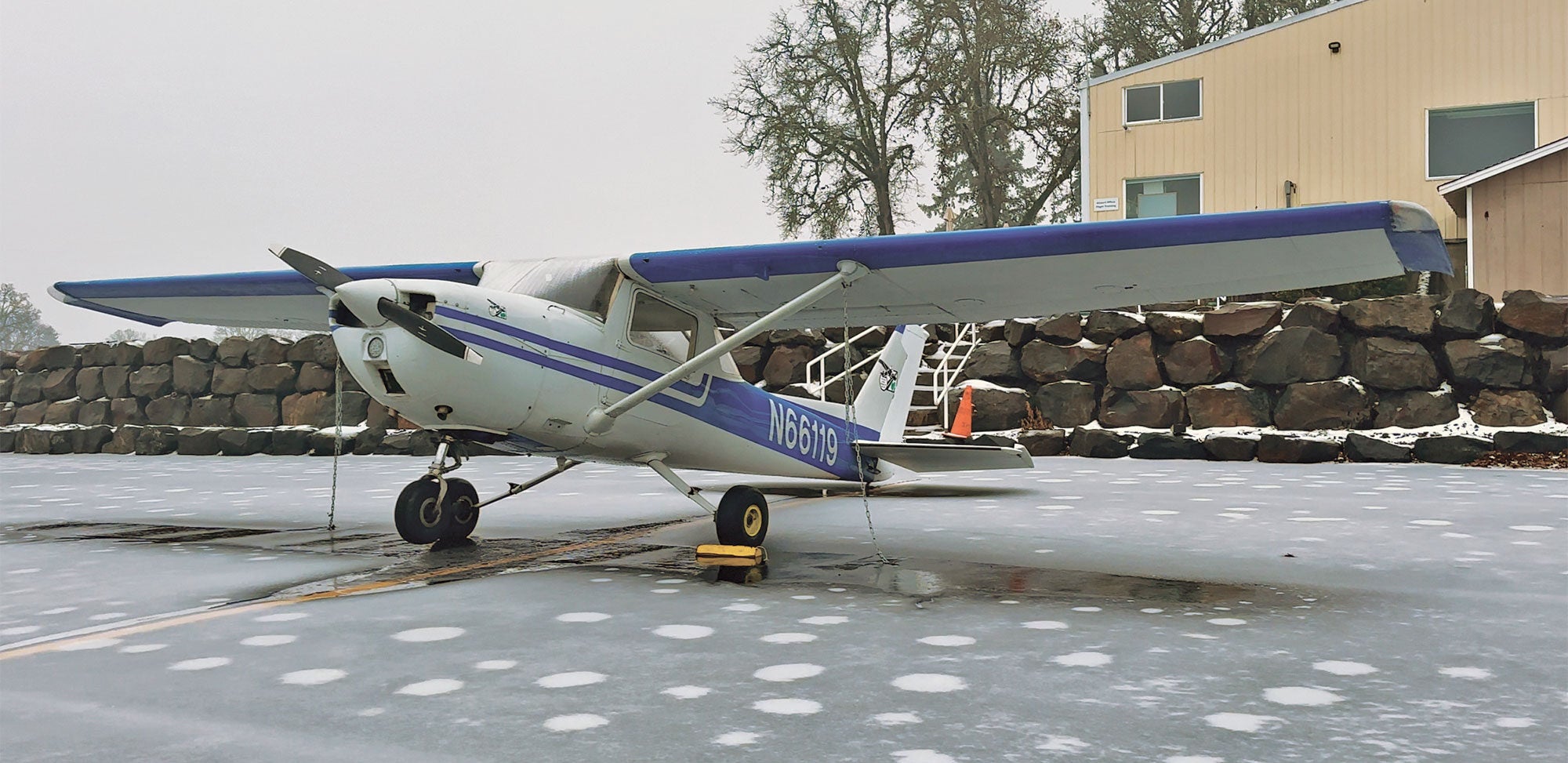 “Did you weigh all this stuff?” said Donna, turning to Ed. “Yes, I did,” replied Ed. “We’re going to be a little over gross, but I’m not concerned.” “OK, just checking. I’m amazed that four days of camping takes so many supplies.”
“Did you weigh all this stuff?” said Donna, turning to Ed. “Yes, I did,” replied Ed. “We’re going to be a little over gross, but I’m not concerned.” “OK, just checking. I’m amazed that four days of camping takes so many supplies.”
Halfway down the runway Donna knew there was a problem. “Uh-oh,” she said matter-of-factly, as the airplane struggled to get airborne. With the power in and the stick all the way back, the plane lifted off at the threshold, gaining only a few feet per second.
“Land straight ahead,” said Ed. “Right,” replied Donna. The field was firm and level with low-cut grass. They landed without incident. “I must have made a mistake on the weight and balance,” replied Ed.
After getting the unloaded airplane back to the hangar, Ed checked the empty weight of the airplane. It was 70 pounds over what was listed on the weight and balance sheet. “When I bought the airplane last year, I just assumed that the listed weight was correct,” said Ed.
Murphy’s Law applies in all the following cases. If you haven’t strapped down the baggage, some event will cause it to dislodge. The closer the airplane is to its gross weight, the more likely it is for the pilot to want to buzz a house or the airport before leaving on a trip. And if you are in a hurry to get somewhere, weight and balance calculations will have an error in them.
Weight Gain Top Traps
Creep. If you’ve noticed what happens in clothes closets at home—every time you go in the closet there is more stuff, not less—you understand that it happens to your airplane too. Weight creep. It is far more common in Experimentals because we are always adding things. Many secondhand aircraft have inaccurate weight and balance data.
The single best way forward is to actually weigh the airplane. Digital scales are inexpensive these days but it’s likely your EAA chapter has or knows someone who has a set of accurate scales. Use them. Be sure you know how much unusable fuel is on board as well as the oil level. Make sure you know how the CG arm is identified and take a moment to add a gut check to the stated arms for things like fuel and passengers.
Change. Have you made a major change to the aircraft? In addition to going through another testing phase, you should start from scratch on your empty weight calculations. Just guessing that the new instruments weigh about the same as the removed hardware isn’t good enough. Actually weigh every piece as a starting point, but a subsequent reweighing is still the best choice.
Unusual cargo. It’s one thing to just get in the airplane and go flying without thinking about weight. Typically, nothing has changed since the last time you flew, and you are well within the safety envelope. But when you are packing for a trip or have decided to haul something heavy or big, run your calculations methodically and carefully.
It used to be that we’d groan when we had to do a weight and balance calculation because it was by hand. Now there are apps for weight and balance that mean there is no excuse for not running one. And checking before we take off.
One last thing. Don’t forget the “balance” part. Most of us have lifted off to find that we have to apply more forward or aft stick than we expected. This should always be part of the calculations.













